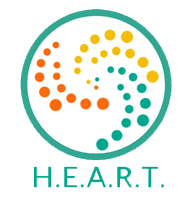Young people in contact with treatment services falls again: latest OHID report
27 January, 2022
The Young people's substance misuse treatment statistics 2020 to 2021: report has just been published by @OHID
The office for Health Improvement & Disparities (OHID) has published its 20/21 report on the substance use treatment of young people.
Between April 2020 - March 2021, there were 11,013 young people up the age of 17 in contact with alcohol and drug services in the UK. This equates to a 23% reduction from the previous year (14,000+), and an overall 55% reduction over the last 13 years.
The role of the pandemic
OHID have acknowledged the likelihood that coronavirus contributed significantly to this large reduction in commencing treatment for substance use. The closure of schools and reduction in face-to-face contact with regular services subsequently limited the opportunities for young people to refer into, or be referred into services. Despite this, however, social care services remained the most common route into treatment.
The impact of the pandemic may also have contributed to the rise in the number of young people commencing treatment, who also required help with their mental health. This, however, continues an upward trend in the need for mental health support, which has risen from 32% (2018/19), to 37% (19/20), to 43%, in this report.
Trends in substance use
Overall, cannabis remains the substance that the majority of young people enter treatment for (89%), either as the only substance being used, or along with other substances. 41% reported problems with alcohol, 12% with ecstasy and 9% with powdered cocaine were the other substances featuring most prominently.
However, when entering treatment, young people can only record up to three substances at a time which they are experiencing a problem with.
Trends over time
Overall, young people attending specialist substance misuse services has been falling ever since 2008/09, when almost 25,000 individuals were recorded as in treatment. The OHID report, which is available in full, here, does not confirm whether this large reduction in numbers relates to fewer opportunities to be referred, or whether the criteria to enter treatment has changed.
Young people aged 16 - 17 remain more likely to enter treatment than those aged 14 - 15, and under the age of 14. The trend of substances used has also remained largely consistent over this time, too, with the only significant change being the use of alcohol amongst those entering treatment.
In 2008, 68% of young people in treatment reported experiencing problems with alcohol, while in this year’s report the figure is only 41%. Meanwhile, cannabis use has remained steady, between 85% - 90%, while substances other than alcohol or cannabis have always been recorded as a problem for around 10% of those in treatment.
Completing treatment
Of the 7000+ young people who left treatment in 20/21, almost 80% were recorded as having completed their treatment, usually in the form of community or other mental health services.
However, with 15% leaving treatment early, and 12% dropping out altogether, the concern for any young person leaving treatment, for any reason, is what comes next. Even up to the age of 17, and approaching “adulthood”, treatment services remain child-centred, and also place emphasis on ensuring young people do not mix with adults who are also using substances.
If you, or a young person in your life is experiencing a problem with alcohol, or any other substance, there is a list of useful contacts right here on our website: https://heartoncampus.co.uk/links
However, you also have the opportunity to chat within our safe, confidential, peer-led community, by signing up to HEART and joining the conversation on recovery: https://heartoncampus.co.uk/register
